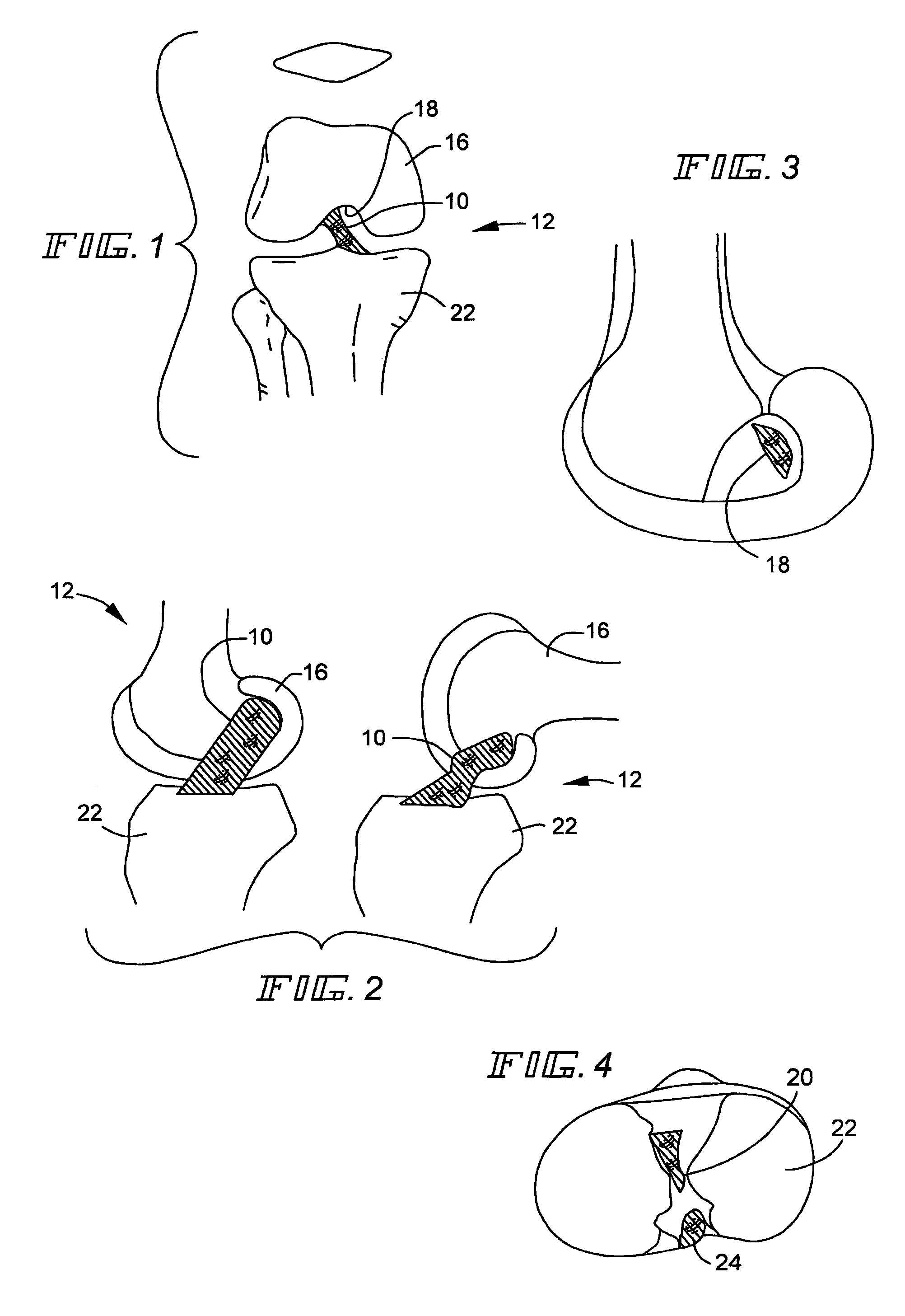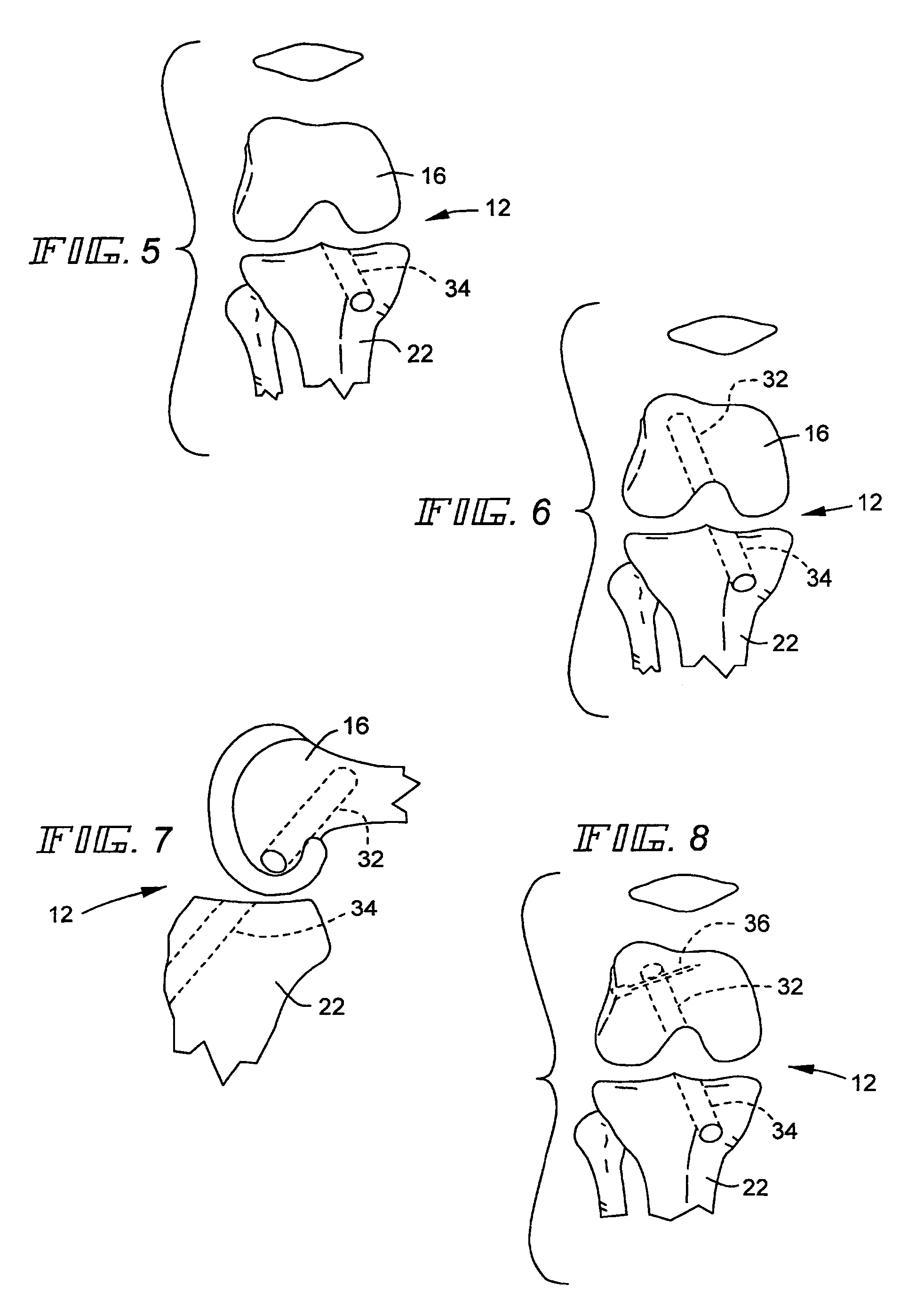Method for reconstructing a knee
a knee and knee joint technology, applied in the field of knee reconstruction, can solve the problems of loss of stability, effusion and pain, and other structures in the knee are at risk of damage, and achieve the effect of reducing the risk of injury to other structures
- Summary
- Abstract
- Description
- Claims
- Application Information
AI Technical Summary
Problems solved by technology
Method used
Image
Examples
Embodiment Construction
[0039]The Anterior Cruciate Ligament (ACL) 10 is a short (2.5–5.0 cm) stout ligament in the center of a knee 12 (FIGS. 1,2). This ligament 10 generally attaches on a femur 16 in the postero-lateral aspect of the inter-condylar notch 18 (FIG. 3). The other end 20 of the ACL attaches to a tibia 22 in the center of the tibial plateau just anterior to the Posterior Cruciate Ligament 24 (PCL) (FIG. 4).
[0040]The main function of the ACL 10 is to resist anterior translation of the tibia 22 in reference to the femur 16. When this ligament 10 is torn, the knee 12 loses some of its stability and this can lead to symptoms such as giving way, effusions and pain. Also other structures in the knee 12 are at risk for damage with a torn ACL 10 such as the menisci and cartilage surfaces. Because of these problems if a person suffers an injury resulting in a tear of the ACL 10, it is frequently recommended to reconstruct this ligament, as it has no ability to heal itself.
[0041]ACL reconstruction atte...
PUM
 Login to View More
Login to View More Abstract
Description
Claims
Application Information
 Login to View More
Login to View More - R&D
- Intellectual Property
- Life Sciences
- Materials
- Tech Scout
- Unparalleled Data Quality
- Higher Quality Content
- 60% Fewer Hallucinations
Browse by: Latest US Patents, China's latest patents, Technical Efficacy Thesaurus, Application Domain, Technology Topic, Popular Technical Reports.
© 2025 PatSnap. All rights reserved.Legal|Privacy policy|Modern Slavery Act Transparency Statement|Sitemap|About US| Contact US: help@patsnap.com



